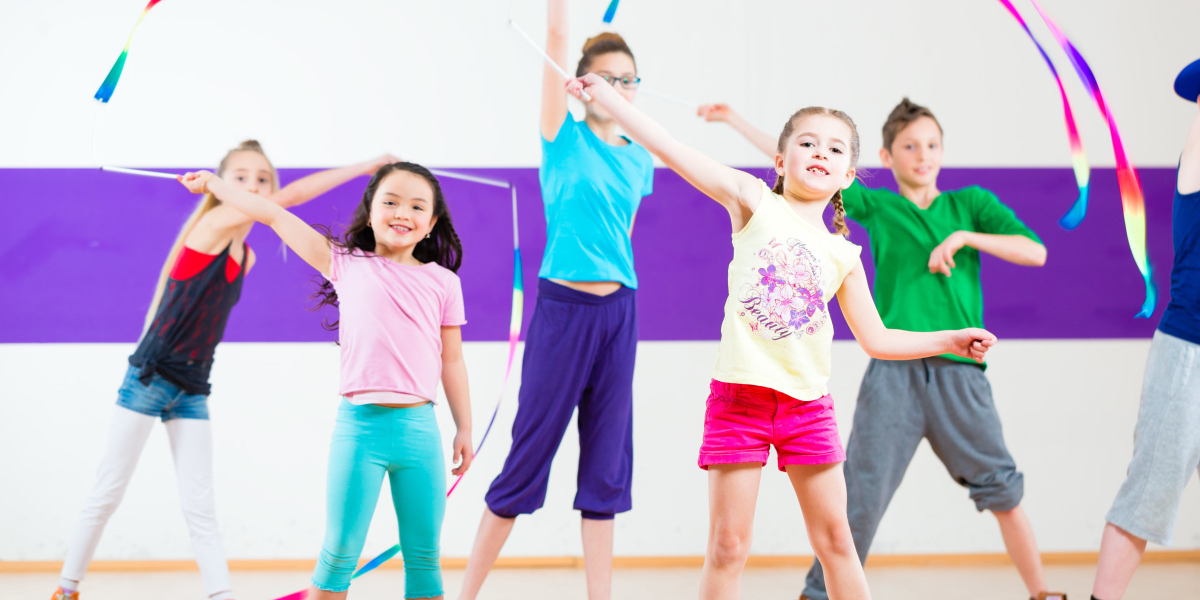Why Creative Movement Is Important in Early Childhood

Dance as an art form is beautiful and breathtaking. There’s nothing quite like watching a skilled dancer turn and leap across the stage in time to the music, telling a story with their body.
But dance provides benefits far beyond that available to those trained in the discipline.
For young children, dance and creative movement can help improve their cognitive development, building skills necessary for success later in life.
Here are 10 ways creative movement can benefit children during the early childhood years:
Sensory Awareness
Young children are highly sensory beings. They flock to things that stimulate their senses of touch, taste, sight, smell, and hearing.
Dance and creative movement provide stimulation for three of those five senses at once: touch, sight, and hearing.
By listening to the music and learning how to move in time with the beat, children begin to more finely hone their senses and learn how their bodies can work in harmony with the stimuli around them.
Additionally, these sensory experiences help children connect with themselves, with one another, and with the world around them, leading them to begin appreciating the beauty of their environment.
Development
Dance provides opportunities to hone both gross and fine motor skills.
From turning and jumping to carefully controlling the movement of hands and fingers, dance engages all aspects of a child’s physical development.
Dancing also awakens the inner creativity in all children, allowing them to hear a piece of music and decide how their body can best respond to it.
In early childhood creative movement, it’s important to have a mixture of structured directions for moving as well as plenty of time for individual exploring. This balance gets children used to bringing to life someone else’s creative vision while giving time for their own exploration.
Social Skills
To have a healthy social life, children must understand and embrace their own uniqueness.
Through creative movement, they learn that not everyone interprets music the same way they do, and not everyone moves the same. This helps children see that everyone is different but no one is wrong in their individuality.
Being able to understand these differences – and similarities – helps children develop richer social skills and a better acceptance of others.
Health & Fitness
Simply put, dancing is great exercise.
Teaching children at a young age that frequent exercise is fun and beneficial helps build lifelong lovers of sports and movement. This leads to improved health and wellness even as adults.
Language
Coordinated movement is essential to proper brain development, which is necessary to developing language skills.
The right side of the brain, the sensing and feeling side, functions best through creative activities. The left side is the logical thinking and planning side of the brain.
Dance allows both sides of the brain to engage, as children must follow steps and directions while also utilizing their creativity and interpreting the music.
Body Awareness
Young children often cannot tell the full limits of their own bodies.
Through dance, however, they learn in a controlled environment the things their bodies can and cannot do, and what actions they need to take to perform a desired movement.
Dance helps build coordination and spatial awareness, which improves children’s gross motor skills.
Concentration
Remembering the next steps in a dance sequence requires a great deal of concentration. So does sitting down to do school work.
By using and honing concentration skills in early childhood, children are better prepared for the expectations of the classroom.
They learn when it’s OK to move and when they need to sit still, what types of movement are acceptable, and how to stay within their own physical boundaries.
Respect
Through dance, children learn that it’s not possible to move in someone else’s space. If you do, you crash and no one gets to dance.
Learning this skill helps children understand that everyone has their own body boundaries, and they should respect the limits of those boundaries at all times.
Additionally, children learn that everyone’s different and to honor and accept those differences.
Self Esteem
As children learn and develop new skills, their self esteem increases.
Just like in school, play, and the rest of their lives, dancing and creative movement gives young children new skills to learn and master. This progress keeps them motivated and interested, leading to better tenacity later in life.
Special Needs
The great thing about creative movement is it can be adapted to meet any special needs.
Creative movement gives each child the opportunity to get out on the dance floor at their own level and express themselves. Few other art forms or skills allow that amount of adaptability.
Dance Lessons for All Ages in Frederick, MD
From the tiniest dancer to committed teens, Dance Unlimited has classes for all ages and skill levels. We pride ourselves on creating a welcoming environment that fosters a love for dance no matter the individual dancer’s goals. From competition teams to recreational class, we have something for everyone. Take a tour today!
